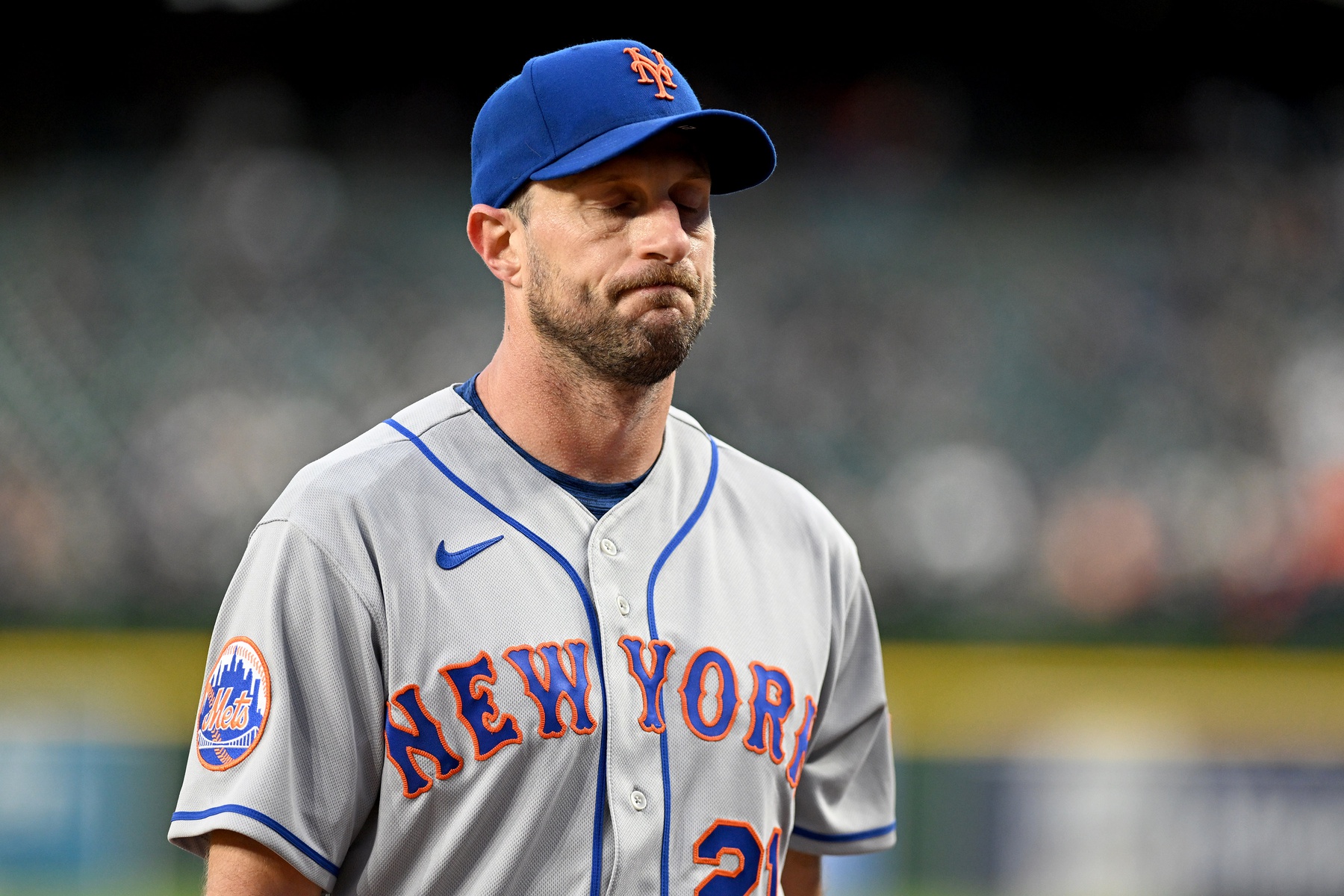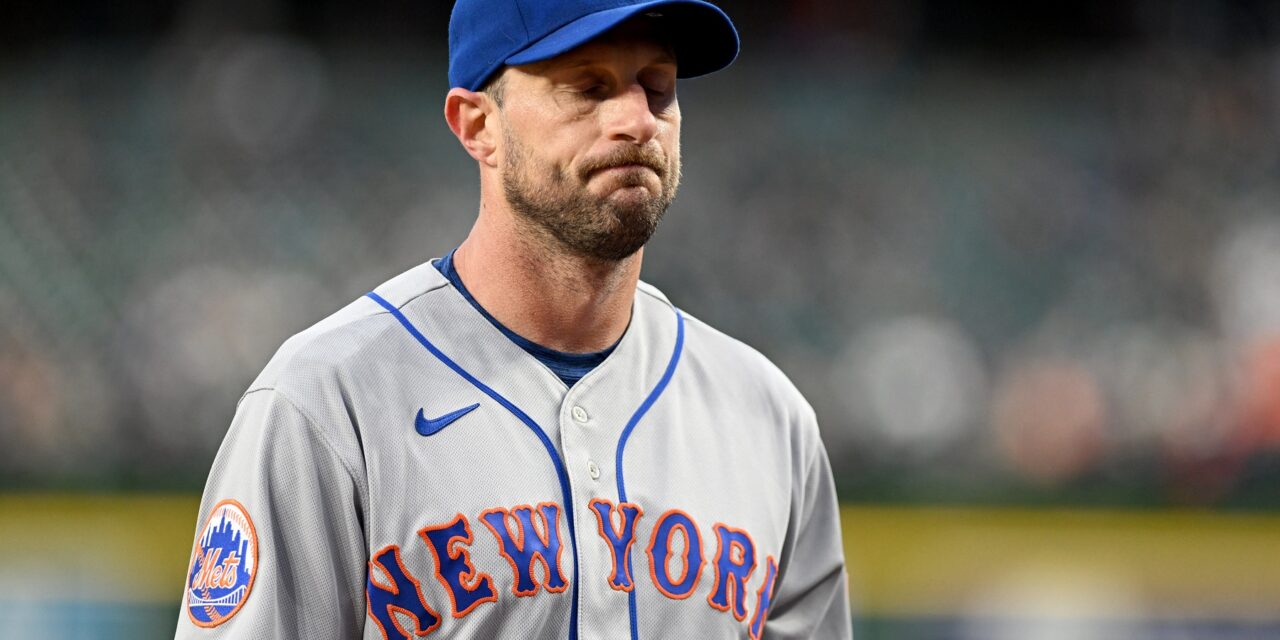
Lon Horwedel-USA TODAY Sports
The Mets’ struggles continued at Citi Field with a series loss to the Colorado Rockies, another team that was previously on track for over 100 losses on the season. With the defeat, the Mets fell below .500 after a season’s first week for the first time since the final day of the 2021 season.
Although Billy Eppler and others have preached patience, the way the Mets are losing speaks to greater concerns about the team’s immediate future. Not being overly influenced by short-term results is one thing, but when does the short-term become not-so-short-term? Losing four consecutive series, three of which to some of the worst teams in baseball, will breed significant questions.
3 Up
Senga Shows Upside
Kodai Senga has endured an up-and-down adjustment to American baseball. He’s had some nice moments with his ghost fork, but he often starts slow, labors with many pitches, and falls apart somewhere around the fifth inning.
Against the Rockies Friday night, Senga showed the upside that made the Mets decide to invest in him as a 30-year-old rookie. He went six shutout innings, surrendering just two hits. After ceding four balls in play above 100 mph in the first three innings, Senga kept the contact against him soft over the next three. Free passes and throwing strikes continue to be issues—he surrendered four walks and threw just 52% of his pitches for strikes—but a WHIP of 1.00 in the game is still a huge improvement.
If Senga can stack quality starts, it would be huge for a starting rotation that has been statistically one of the worst in Mets’ history.
McHits Breaks Mini Funk
Jeff McNeil started off the 2023 season slowly before going on a tear. He had again cooled down, going 0-for-10 in the four games prior to the series finale. However, a 3-for-5 game with two RBIs, including the Mets’ last go-ahead RBI, got McNeil back on track. This might not be a traditional “up,” but once again there was not much to choose from. Brandon Nimmo‘s homer and nice catch in the opener and Brett Baty‘s two-run single were other options.
Anyone Else?
It’s been really difficult to write the “3 Up” section of this column for the last few series. This one is no exception. I’ll go with Francisco Álvarez after the rookie went 2-for-5 with two runs scored, two walks, and a well-struck double that just missed leaving the yard. Álvarez is making his case to stay in the majors when Omar Narváez returns, which would force the team to designate Tomás Nido for assignment.
Other than Álvarez’s short-stint success, David Robertson and Drew Smith each threw a scoreless inning in the series opener. Daniel Vogelbach hit his second homer of the season in the finale with the game already out of reach. Brett Baty came through with an early two-run single in that game.
There just isn’t a lot to smile about for the Mets right now.
3 Down
Permanent Starting Pitching Malaise?
Despite Senga’s strong start, the other two games of the series epitomized the Mets’ starting pitching woes. Tylor Megill continued to scuffle, allowing three runs in 4.2 innings while raising his ERA to 4.33 and his WHIP to 1.50. He is now in the 22nd percentile or below in xERA, xBA, xSLG, strikeout rate, walk rate, whiff rate, and chase rate. That is seriously concerning for his future performance, as well.
Meanwhile, Joey Lucchesi pitched on three days’ rest and gave up three runs in four innings. He once again allowed a run in the first inning, which left the Mets in an early hole. When the team gave him a two-run cushion, he could not maintain it. Though he left with a 4-3 lead, his four walks allowed and 17.5 pitches per inning once again left the team in a deep bullpen game.
It seems that in the games where the Mets’ lineup does manage to show up, their pitching blows the game. Last season, the Mets went 55-4 (.932) when they scored six or more runs in a game, per Baseball Savant, which occurred in 36% of their games. Thus far in 2023, they’re 7-2 (.778) in those games, which have occurred 25.7% of their total games played.
Justin Verlander‘s presence in this rotation could possibly stop the bleeding as he builds up strength, but overall, there are more questions than answers for the Mets’ starters.
Bullpen Blowups
Coupling with the starting pitching woes are the bullpen scuffles. It’s a different pitcher each day. Last week, Jimmy Yacabonis performed brilliantly with a nine-up, nine-down performance. He could not duplicate that performance in the final games of the series, giving up five runs while recording just one out to lose the lead and put the game virtually out of reach. Tommy Hunter sealed the deal by giving up another three runs in 2.2 innings.
In the prior game, it was Stephen Nogosek who allowed two runs in 2.1 innings to give the Rockies a cushion they did not cede. Nogosek did some good work for the Mets last season but is yet another JAG (Just A Guy) whom the team is relying on for meaningful middle innings.
The Mets have gone from scrubs like Dennis Santana to the most recent shot in the dark with Dominic Leone. With the league-wide usage of 13 pitchers in recent years, this is hardly a problem unique to the Mets, but it’s that much more glaring with the starter struggles.
Polar Bear Icecaps
Pete Alonso went from unstoppable to being unable to buy a hit over the last few weeks. He is now 4-for-27 in May after enduring a 1-for-9 series against the Rockies. The most painful part of Alonso’s struggles is his tendency to chase pitches that are way out of the strike zone, especially breaking balls.
When Alonso is right, there may just be no more lethal hitter in baseball. But when he’s wrong, he’s so wrong that it seems like he’ll never break out of it. Perhaps a big part of it is the knowledge that there is no other real game-changing power on this team, which causes him to get stuck in his head and try to hit a home run on every pitch.
As good as Alonso is, the way he’s played this year epitomizes both the reason that the Mets should lock him up long-term and the fact that he cannot do it all on his own. If the team is going to commit to him long-term, they’ll need to surround him with other talent that can take some of the load off his shoulders.
Dishonorable Mention: Vogelbasepaths
Although there are many downs in this series, the level of the baserunning gaffe committed by Vogelbach deserves a mention of its own. With the Mets already up 3-1 in the first and runners on first and second with two outs, Luis Guillorme singled, which should have easily scored Brett Baty. However, Vogelbach was caught taking too wide of a turn around second, and his tag-out prior to Baty crossing the plate cost the Mets another run.
This was inexcusable on several levels. For one thing, there is no reason that Vogelbach should be even a step past second base on a typical single, especially not with two out and a runner coming to the plate. Baty had slowed up slightly after picking up the on-deck batter telling him he didn’t have to slide. Vogelbach, meanwhile, missed his third-base coach’s signal that the throw was coming to second and not home.
Vogelbach owned up to his mistake, stating that the game could have been completely different if not for it. The Mets would have been up 4-1 and still had runners on first and second with two out. It’s hard to project how a game goes in that situation.
Mets fans have been getting frustrated with Vogelbach’s lack of tools as a player. A robust roster with other positional versatility can perhaps afford to carry a platoon DH with no consistent ability other than taking a walk. However, on a team that already has multiple scuffling hitters and other one-tool players (Nido and Guillorme, specifically), Vogelbach is increasingly becoming a player they just cannot afford to clog up the roster.
Lack of speed (fourth percentile sprint speed) is one thing, but when his baserunning actively costs the team runs, that makes the case even stronger.
The Mets head to Cincinnati to face the 14-20 Reds on Tuesday (6:40 p.m. ET start).
















